Missouri elected its member August 7, 1826.
| District | Incumbent | This race | |||
|---|---|---|---|---|---|
| Member | Party | First elected | Results | Candidates | |
| Missouri at-large | John Scott | Anti-Jacksonian | 1820 | Incumbent lost re-election. New member elected. Anti-Jacksonian hold. |
|
| Elections in Missouri |
|---|
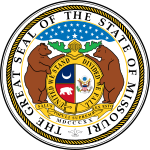 |
Missouri elected its member August 7, 1826.
| District | Incumbent | This race | |||
|---|---|---|---|---|---|
| Member | Party | First elected | Results | Candidates | |
| Missouri at-large | John Scott | Anti-Jacksonian | 1820 | Incumbent lost re-election. New member elected. Anti-Jacksonian hold. |
|
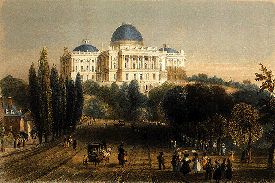
The 17th United States Congress was a meeting of the legislative branch of the United States federal government, consisting of the United States Senate and the United States House of Representatives. While its term was officially March 4, 1821, to March 4, 1823, during the fifth and sixth years of James Monroe's presidency, its first session began on December 3, 1821, ending on May 8, 1822, and its second session began on December 2, 1822, to March 3, 1823. The apportionment of seats in the House of Representatives was based on the 1810 United States census. Both chambers had a Democratic-Republican majority.

The 19th United States Congress was a meeting of the legislative branch of the United States federal government, consisting of the United States Senate and the United States House of Representatives. It met in Washington, D.C. from March 4, 1825, to March 4, 1827, during the first two years of John Quincy Adams's presidency. The apportionment of seats in the House of Representatives was based on the 1820 United States census. The Senate had a majority of Jackson Men, while the House had an Anti-Jackson (pro-Adams) majority.

James Tallmadge Jr. was a United States lawyer, and politician who served as a United States Representative from New York's 4th congressional district.

Bellefontaine Cemetery is a nonprofit, non-denominational cemetery and arboretum in St. Louis, Missouri. Founded in 1849 as a rural cemetery, Bellefontaine is home to a number of architecturally significant monuments and mausoleums such as the Louis Sullivan-designed Wainwright Tomb, which is listed on the National Register of Historic Places.
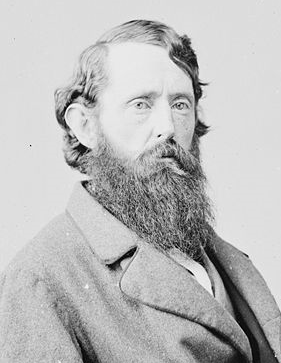
Benjamin Gratz Brown was an American politician. He was a U.S. Senator, the 20th Governor of Missouri, and the Liberal Republican and Democratic Party vice presidential candidate in the presidential election of 1872.
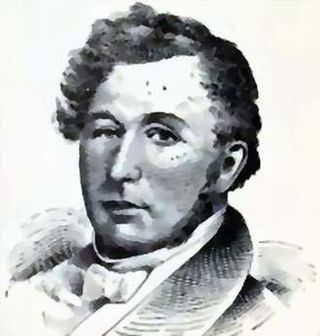
John Miller was an American publisher, War of 1812 veteran, and politician from Missouri. A Democrat, Miller was the fourth Governor of Missouri before serving three terms in the United States House of Representatives from 1837 to 1843.

The 1826–27 United States House of Representatives elections were held on various dates in various states between July 3, 1826, and August 30, 1827. Each state set its own date for its elections to the House of Representatives before the first session of the 20th United States Congress convened on December 3, 1827. They occurred during John Quincy Adams's presidency. Elections were held for all 213 seats, representing 24 states.

Joseph Humphrey Sloss was an American politician who served the state of Alabama in the U.S. House of Representatives between 1871 and 1875. He was born in Somerville, Morgan County, Alabama on October 12, 1826. He studied law, was admitted to the bar, and entered practice in St. Louis, Missouri. He moved to Edwardsville, Illinois in 1849, and served in 1858 and 1859 as a member of the Illinois House of Representatives. Sloss returned to Alabama, and during the Civil War served in the Confederate Army. He served as mayor of Tuscumbia, Alabama, was elected in 1870 as a Democrat to the U.S. House of Representatives, and was reelected in 1872, but was defeated for reelection in 1874. He was appointed in 1877 as United States marshal for the northern district of Alabama, serving until 1882; and served as clerk of the U.S. federal court at Huntsville. Sloss moved to Memphis, Tennessee, and died there on January 27, 1911. He is buried in Maple Hill Cemetery in Huntsville, Alabama.

William Adam Piper was an American politician and a businessperson. He was a one-term member of the United States House of Representatives from California from 1875 to 1877.

John Boyle was a United States representative from Kentucky and later a judge of the Kentucky Court of Appeals, and finally a United States district judge of the United States District Court for the District of Kentucky.

Hiram Pitt Bennet was a Congressional delegate from the Territory of Colorado and Colorado Secretary of State
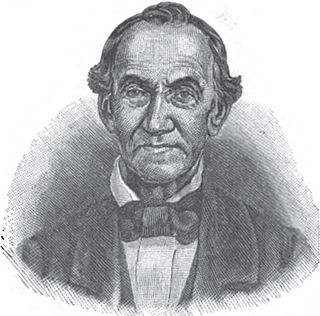
John Telemachus Johnson was a minister in the Christian Church, an attorney, and a politician, elected as U.S. Representative from Kentucky. His older brothers, also politicians, included James Johnson and Richard M. Johnson, who served as Vice President under Martin Van Buren; he was the uncle of Robert Ward Johnson, also a politician.

John Scott was a Delegate and a U.S. Representative from Missouri.

In Missouri, the 1824 United States presidential election resulted in the state's electoral college votes going to Henry Clay, but then its vote in the House of Representatives contingent election going to the eventual winner, John Quincy Adams. In the 1824 presidential election, five major candidates emerged: Clay, Adams, Andrew Jackson, William H. Crawford, and John C. Calhoun, although Calhoun dropped out to run for the vice presidency. In the new state of Missouri, Crawford had little support, Clay was the popular favorite, Jackson was popular in rural areas, and Adams had some support in urban areas, particularly St. Louis. Clay won the popular vote, with Jackson second, Adams third, and Crawford fourth, and Clay received Missouri's three votes in the electoral college.
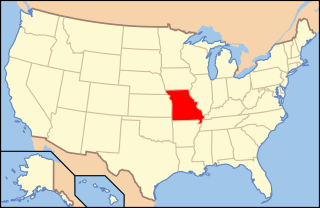
The following is an alphabetical list of articles related to the U.S. state of Missouri.

Fort Belle Fontaine is a former U.S. military base located in St. Louis County, Missouri, across the Mississippi and Missouri rivers from Alton, Illinois. The fort was the first U.S. military installation west of the Mississippi, in the newly acquired Louisiana Territory, and served as a starting point for many expeditions to the American West.
Thomas Alexander Harris was a United States Army officer at the end of the Mexican–American War and a Missouri State Guard (Confederate) brigadier general during the early months of the American Civil War. He then became a prominent Confederate politician, serving in the First Confederate Congress from 1861 to 1864. Among other occupations, he was a Missouri State Representative before the Civil War and a Kentucky State Representative in 1885–1886.
Robert William Wells was an American lawyer and jurist who served as judge of the United States District Court for the Western District of Missouri (1857–1864) and the United States District Court for the District of Missouri (1836–1857). He previously served as the 3rd attorney general of Missouri from 1826 to 1836. Wells is credited with designing the Missouri State Seal.

Pennsylvania elected its members October 10, 1826.
The 1826 United States elections occurred in the middle of Democratic-Republican President John Quincy Adams's term. Members of the 20th United States Congress were chosen in this election. The election took place during a transitional period between the First Party System and the Second Party System. With the Federalist Party no longer active as a major political party, the major split in Congress was between supporters of Adams and supporters of Andrew Jackson, who Adams had defeated in the 1824 Presidential election.